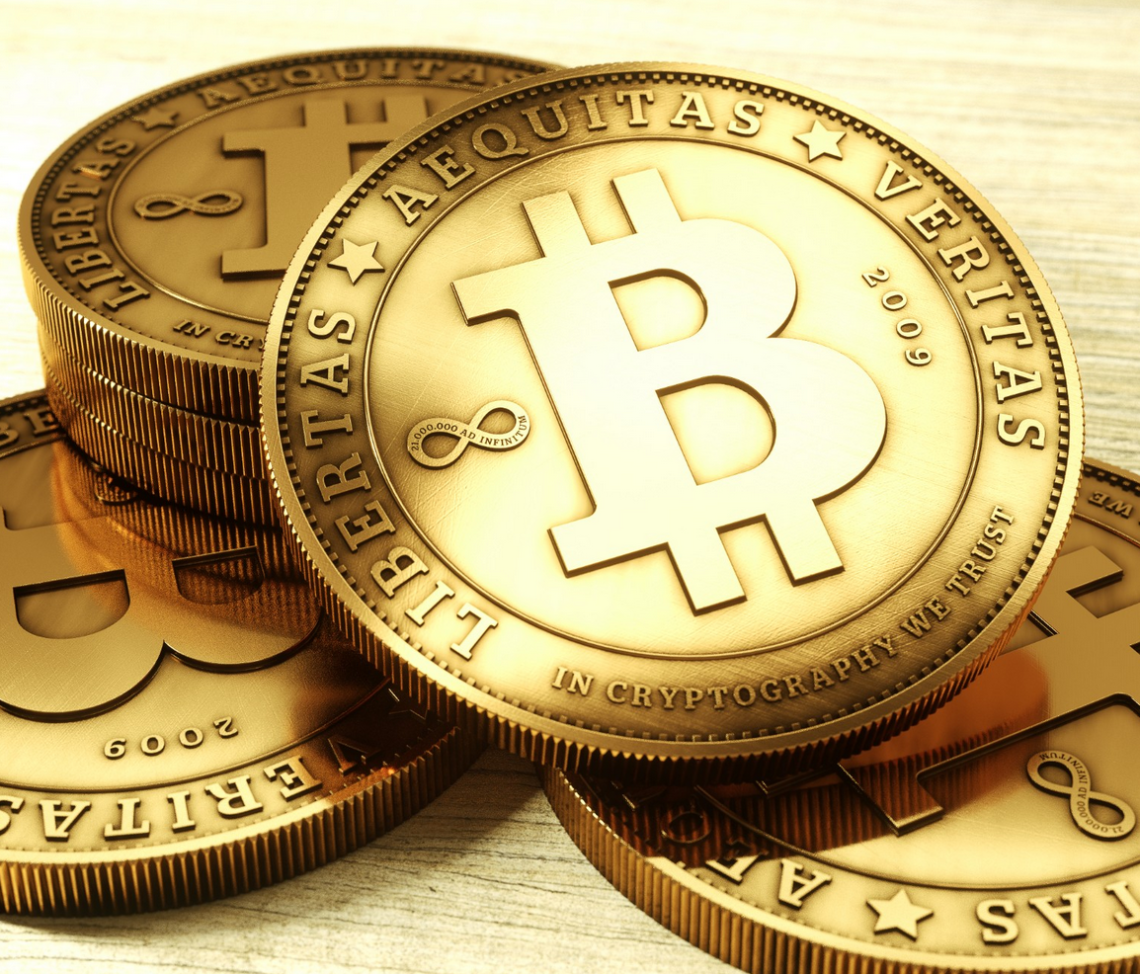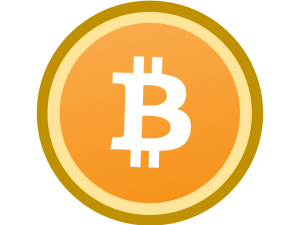What Is Bitcoin, Anyway?
Bitcoin, the world’s most popular digital currency, has been on a tear in 2016, up 32% since the markets bottomed in mid-January. But what is bitcoin? Should investors jump on board?
Before you start investing in bitcoins and counting your profits, it’s important to know what you’re getting yourself into—just like you would with any currency or equity.
What Is Bitcoin?
What is bitcoin, anyway? Bitcoin is a decentralized, digital currency that is created, held, and used electronically. Unlike a traditional, fiat currency, bitcoin is not controlled by anyone, nor is it issued or backed by a central bank.
In that sense, bitcoin is sort of like the Wild West of currencies. Bitcoins are produced by people and businesses on computers around the world using software that solves a complex mathematical equation, unlinked to and unregulated by any central authority.
Because bitcoins are an independent, global currency, they cannot be manipulated. New bitcoins are minted every day but there is a limit to the number that can be created. This helps prevent inflation, but not speculation, hence the investor appeal.
Bitcoins are unlike the U.S. dollar, which the Federal Reserve can print off at will. Well, really, it’s all done online and transferred to different banks with the touch of a button…not all that different from bitcoin in practice.
Anyway, there is a limit to the number of bitcoins available. Today, there are approximately 15.5 million bitcoins in circulation. After the year 2140, no more bitcoins will be mined, and the total amount ever available will stand at 21 million. (Source: “Bitcoin Circulation,” CoinDesk, last accessed May 27, 2016.)
That said, bitcoins can be divided into smaller parts, the smallest of which is a hundred-millionth of a bitcoin, called a satoshi, after the currency’s founder.
Once a bitcoin has been created (mined) by your computer, it is deposited into virtual online wallets. Alternatively, you can purchase the digital cash on one of the many online bitcoin exchanges where you can then make purchases in the real world.
Who Invented Bitcoin?
What is bitcoin? We’ve answered that, but who invented the digital currency?
Bitcoin was created by a software developer by the name of Satoshi Nakamoto in November 2008 via the cryptography mailing list. It wasn’t the biggest mailing list but even then, the idea didn’t appeal to too many people. It took a couple days before he got a reply to his idea. (Source: “Bitcoin P2P e-cash paper,” The Mail Archive, November 1, 2008.)
On January 3, 2009, bitcoin became a reality with the press of a button. An underlying mathematical equation made up of 31,000 lines of code was created.
Nakamoto (everyone presumed it was a pseudonym), who said it took him more than a year to write the software, was motivated to do so by the financial crisis. He wanted to create a digital currency that could not be influenced by unpredictable monetary policies and the whims of bankers and politicians.
Nakamoto was involved with bitcoin until the spring of 2011, when he said he had “moved on to other things.” That’s the joy of a digital currency run by software; it doesn’t need a Federal Reserve overlord ad infinitum.
Who Nakamoto was, or is, has remained a mystery until very recently. In December 2015, Craig Wright was outed in a Wired magazine article. In May of this year, the 44-year-old Australian begrudgingly confirmed he was indeed the inventor of bitcoin. (Source: “Bitcoin’s Creator Satoshi Nakamoto Is Probably This Unknown Australian Genius,” WIRED, December 8, 2015.)
But even that isn’t enough to convince some that he’s really the creator of bitcoin. It could be a ruse. Whether he is or not is really a moot point. Bitcoin is bigger than Mr. Nakamoto. His participation in bitcoin apparently ended in 2011. Since then, his successors have written more code than he did.
The mystery continues.
Why Are Governments Afraid of Bitcoin?
Perhaps not surprisingly, bitcoin was born in 2008, just as the global markets were crashing. The U.S. dollar was tanking, and the Federal Reserve was putting the finishing touches on its first round of quantitative easing (QE1).
It’s pretty hard not to like the idea of a new currency that bypasses a bank and doesn’t really care what the global reserve currency is. I can imagine something like bitcoin would also be really attractive at times when governments decide to seize assets, like the government of Cyprus did in 2013 when it seized 10% of all savings and deposits.
Governments don’t really have any issue with doing whatever they like during a financial emergency. They can print money at will (recall QE1, QE2, QE3…), manipulate interest rates, and even go the negative interest rate route—anything to help the economy.
In 1933 to 1934, as the U.S. was grappling with the Great Depression, the U.S. government decided it was the perfect time to seize the gold holdings of the American people. Known affectionately as “Executive Order 6102,” the presidential executive order was signed by Franklin D. Roosevelt on April 5, 1933. (Source: “Franklin D. Roosevelt,” The American Presidency Project, April 5, 1933.)
The order gave American citizens that were in possession of gold coins, bullion, and gold certificates less than a month (up to May 1, 1933) to turn them in to any Federal Reserve bank or member bank of the Federal Reserve system.
Because the U.S. dollar was tied to the value of gold, the U.S. government thought confiscating gold was a great way to protect the greenback. When all was said and done, the U.S. dollar had been devalued by approximately 40%. Voila! The U.S. economy was back on track. Well, not really; it needed a war to do that.
It was illegal until 1975 for Americans to own gold, unless it was in jewelry or collectors’ coins. The point isn’t that the U.S. is going to seize the gold of private citizens again. It’s that governments will do whatever they want, whenever they want.
There is no safe place to hide your gold, silver, or cash. Technically, the safest currency is a digital currency like bitcoin.
How Volatile Are Bitcoin Prices?
Admittedly, it’s difficult to put a value on a bitcoin—or rather it was. Initially, a bitcoin had a value of less than a penny. But once the idea of bitcoins caught on and merchants started accepting them, their value started to tick up. By the end of 2011, a bitcoin was worth close to $29.00. But, like all currencies, the value of a bitcoin rises and falls on everything from geopolitical tensions to economic conditions or anything else you can think of.
On January 1, 2013, bitcoins started the year trading at $13.00 apiece. By April 10, the value of a bitcoin had soared to $266.00 on the heels of the Cyprus banking crisis. The next day, the Winklevoss twins, who claimed to have invented Facebook, announced they owned one percent of all bitcoins then in circulation, which at the time was 11.78 million, making the Winklevoss stake of 117,800 bitcoins worth $31.3 million. (Source: “Bitcoin Price,” CoinDesk, last accessed May 27, 2016.)
Bitcoins, because they are unregulated, can be used for evil. On October 2, 2013, Silk Road, the online drug market that only accepted bitcoins, was shut down by the Federal Bureau of Investigation (FBI). This seemed to have a positive effect on the price of bitcoins. By early December 2014, the bitcoin’s value had soared to $1,147.
The breathtaking surge in the price of bitcoins put them more and more on the map and was a reminder of how quickly the price of a bitcoin could change.
In 2010, Florida programmer Lazlo Hanyecz famously purchased two pizzas for 10,000 bitcoins. That would have been approximately $600.00 at the time, a princely sum, but the pizzeria was taking a risk accepting bitcoins as payment. By 2014, though, that risk would have paid off to the tune of more than $10.0 million.
Then there was Welsh information technology (IT) worker James Howells, who lost 7,500 bitcoins in 2013 when he accidently tossed out an old hard drive that contained his private key. Sitting under tons of waste, those bitcoins today are worth $3.6 million.
All told, it is estimated that, at last count, more than $1.2 billion of bitcoins have been lost forever. That’s part of the drawback with bitcoins—because they are unregulated, if the owner throws out their password (private key) or dies without passing it on, the bitcoins are gone forever. You can see them…but you can’t spend them. (Source: “The £625m lost forever – the phenomenon of disappearing Bitcoins,” The Telegraph, January 23, 2015.)
What Is the Bitcoin’s Future?
What is bitcoin? Why are governments so nervous about it? We’ve answered those questions, but where is the digital currency going next?
Like all currencies, the bitcoin remains volatile and you need to pay attention to daily occurrences. Since hitting an all-time high of more than $1,000 each, bitcoins have been in a free-fall, hitting a low of approximately $210.00 last August. That would hurt if you had held on.
Fears of the U.S. economy, a global recession, rising interest rates, and even the U.S. presidential election have been helping lift bitcoin prices as of late. Most recently, on May 27, the value of a single bitcoin surged to a 20-month high of around $480.00 on the back of stronger demand from China, where the devalued yuan has sent investors looking for more control over their currency.
The demand from China could send the price of a bitcoin to over $500.00. If bitcoins breach $500.00, it would represent a 138% increase over their August 2015 value. That’s a sizeable profit. If you can handle the volatility, it may be worth the trip.
What’s next for the world’s most popular digital currency? It’s been proclaimed dead dozens of times, while others have pegged it as going to $10,000. After just five years, bitcoins are still in their infancy. However, their future as a rogue digital currency remains bright. That doesn’t mean bitcoins won’t be faced with growing pains or hit some potholes, like all early technologies. (Source: “Tim Draper Predicts $10,000 Bitcoin in Three Years,” News BTC, September 24, 2014.)
Fortunately, the Federal Reserve and every other central bank has no authority to regulate it, meaning bitcoins will stay in the public domain. And the Internal Revenue Service (IRS) considers bitcoins to be property, not currency, much like a stock. For investors, this means any gains are treated like taxable gains and are subject to lower tax rates. (Source: “IRS defines bitcoin as property, not currency,” MarketWatch, March 25, 2014.)
Looking ahead, if the bitcoin is to gain further traction as the currency for the Internet, taking onVisa, PayPal, “Apple Pay,” or any other payment method, the supply growth will need to expand. Further, more businesses will need to adopt it as a payment method.
Again, we’re still in the early stages of bitcoin and it’s likely to evolve, just like the Internet. Keep in mind that it took companies like Facebook and Google more than a decade to reach a level of maturity that investors trust. The same will happen with bitcoins.
Source : http://www.profitconfidential.com/bitcoin/what-is-bitcoin-5-things-you-need-to-know/
Click on the bitcoin logo below to buy, use or accept bitcoin. Unocoin is India’s most popular bitcoin wallet.
To read the bitcoin white paper, visit: https://bitcoin.org/bitcoin.pdf








